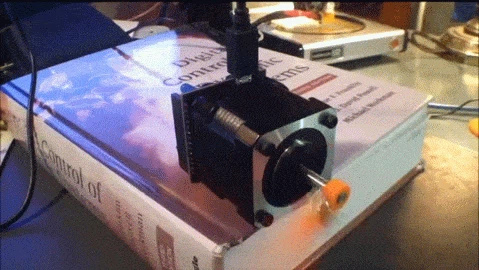I have closed-loop steppers on my HDZero (Luke’s CNC project, before he joined Carbide. Think the HDZ scaled up to a whole CNC) and I’m happy with my choice, but I don’t know that they make a lot of sense for a Shapeoko. I really like that my system will stop when something goes wrong, rather than trying to break things even harder. It’s also helped the couple times I’ve accidentally mis-calculated my machine’s limits–once I tried boring M12 holes slightly too close to the X limit, and instead of a completely broken run with lost steps and everything being crooked, I ended up with the last row of M12s having a flat on one side of the circle. It also makes it really obvious if I over-drive some component, and made tuning easy.
But, the performance limits on my CNC aren’t really stepper-related. On paper, I should be able to do ~22,000 mm/min rapids, but ballscrew resonance limits that to ~15,000 mm/min on the X axis. If I go faster it’ll start shaking and then the steppers fault out. I’ve cranked acceleration up a few times, but my table wasn’t solid enough to accelerate at the limit of the machine, so I backed off. In just about every other case, the limit is either my endmill or my spindle, and I end up with either a broken chunk of carbide or one filled with melted aluminum.
The closed-loop steppers don’t help at all with accidentally ramming the endmill into the surface and breaking it. Nor do they help with using too high of a feed rate and stalling my spindle (I should really upgrade to something with more torque). In both cases, I end up with broken endmills, but rarely any more damage (although I killed an ER16 collet once by breaking the endmill and then ramming the stump into the collet).
I don’t think it’s really possible to get 4 closed-loop steppers for much under $500, and I don’t think there’s any way to drive them with the Carbide motion GRBL board, so you’ll have to switch to a GRBL board with support for external stepper drivers. Which probably means that Carbide’s software will stop working.
All in all, the thing I probably like most about my steppers is their really, really low inductance. Leadshine lists them as 1.18 mH, which is really low. That means that their RPM/torque curve is much flatter than most steppers, which means that they have enough power at high speeds to actually be useful. They’re actually more torque-y at 2,000 RPM than pretty much every NEMA34 stepper that I’ve seen. All in all, they’re only slightly worse than AC servos would be, and servos would have cost ~3x as much and been really hard to mount.
As for BartK’s question: would closed-loop steppers protect from stalling a 3/8" endmill in 6mm aluminum? Probably. I’ve stalled 1/4" endmills in 1/4" aluminum, and the endmill broke first. I suspect that with a 3/8" endmill, one of my steppers would fault before the bit broke. That is, unless the machine was in the middle of a high-speed rapid move when the endmill hit the aluminum. If that happened, then I suspect I’d have more damage than just a broken endmill.

